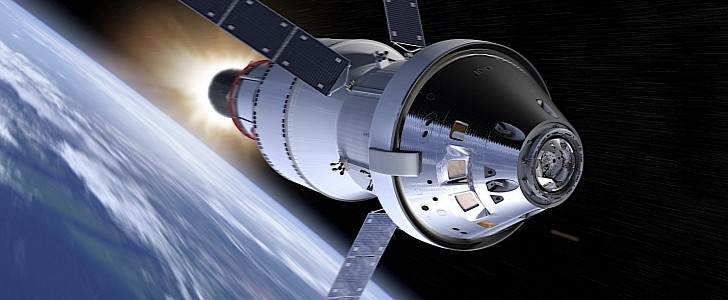When going into space, astronauts have to face two extremely dangerous situations. The first is the launch when a massive controlled explosion has to occur beneath them so that the rocket can take off. The second is reentry when the spacecraft bringing them back has to survive extreme heat.
To date, despite the decades of space exploration and dozens of space launches, America lost only one ship and its crew during reentry, the Columbia shuttle in 2003. And now that the pace of missions is picking up, NASA is determined not to let that happen again.
With the Artemis missions just around the corner, the agency is hard at work validating all the hardware that it will use, namely the Space Launch System (SLS) rocket and the Orion spacecraft.
As far as Orion goes, parts of the capsule were put back in April through their paces. More specifically, we’re talking about samples of heat shield materials meant to protect the astronauts during reentry.
NASA made public the details of the test last week, saying it involved, for the first time, the use of both types of heat experienced during reentry, convective and radiant. The test was conducted at the agency’s Laser-Enhanced Arc Jet Facility in Silicon Valley and was successful, opening the door for NASA to validate the capsule for human use.
According to NASA, Orion will hit Earth’s atmosphere at 25,000 mph (40,233 kph) when returning from its trips to the Moon. That generates a tremendous amount of heat caused by friction, which in the case of the space shuttle reached as much as 1,650 degrees Celsius (3,000 degrees Fahrenheit).
A spacecraft hitting an atmosphere generates both convective and radiant, and their combined effects “affect the heat shield differently than either does alone.”
During the April test, NASA heated up the material that makes up the Orion heat shield, called Avcoat, but also “the material used at locations on the heat shield where the Orion crew module and service module connect.” It’s called 3DMAT and will be used for the first time ever during the Artemis missions.
With the Artemis missions just around the corner, the agency is hard at work validating all the hardware that it will use, namely the Space Launch System (SLS) rocket and the Orion spacecraft.
As far as Orion goes, parts of the capsule were put back in April through their paces. More specifically, we’re talking about samples of heat shield materials meant to protect the astronauts during reentry.
NASA made public the details of the test last week, saying it involved, for the first time, the use of both types of heat experienced during reentry, convective and radiant. The test was conducted at the agency’s Laser-Enhanced Arc Jet Facility in Silicon Valley and was successful, opening the door for NASA to validate the capsule for human use.
According to NASA, Orion will hit Earth’s atmosphere at 25,000 mph (40,233 kph) when returning from its trips to the Moon. That generates a tremendous amount of heat caused by friction, which in the case of the space shuttle reached as much as 1,650 degrees Celsius (3,000 degrees Fahrenheit).
A spacecraft hitting an atmosphere generates both convective and radiant, and their combined effects “affect the heat shield differently than either does alone.”
During the April test, NASA heated up the material that makes up the Orion heat shield, called Avcoat, but also “the material used at locations on the heat shield where the Orion crew module and service module connect.” It’s called 3DMAT and will be used for the first time ever during the Artemis missions.






